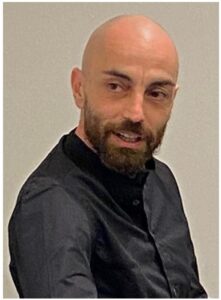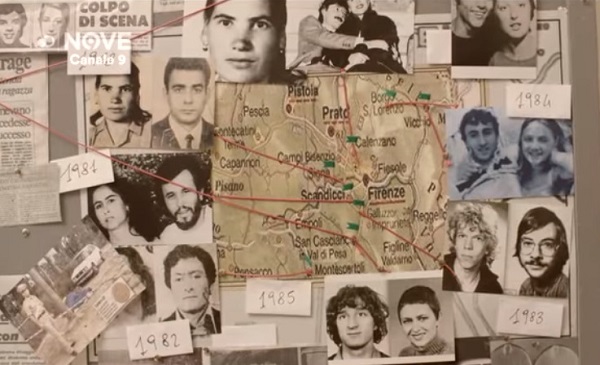Monster of Florence: the link between serial crimes and “collateral” deaths is being investigated
FLORENCE – Around the story of the “monster of Florence”, the serial killer (but some say “killers“) who sowed panic and death in the Florentine countryside in the 70s and 80s, many “collateral” deaths revolve: over in fact, in those years (and in the subsequent 1990s), numerous people connected in some way to the “monster” affair died in mysterious circumstances in addition to the sixteen young people who were barbarically killed.
On 23 December 1980, the farmer Renato Malatesta died by hanging in his home in Sambuca, in the province of Florence. Renato’s body was exhumed on suspicion of murder: his feet touched the ground. He was the husband of Maria Antonietta Sperduto, a woman who had relations with the so-called “snack buddies” (“compagni di merende” in Italian) Pietro Pacciani and Mario Vanni who ended up in prison on charges of being the “monsters” (together with Giancarlo Lotti). In the summer of ’93, while Pacciani was in prison, Francesco Vinci – arrested in 1983 for the crimes of the “monster” and cleared of the double crime committed on 9 September 1983 in Giogoli (Florence) while he was detained – met a horrendous end: the murderers they hogtied him with a Sardinian friend, Angelo Vargiu, and set fire to his car in the woods of Chianni. In that same summer, on August 19, in Barberino Val d’Elsa (Florence), Milva Malatesta, 31 years old, daughter of Renato Malatesta and Maria Antonietta Sperduto, died burned in her car together with her 3-year-old son Mirko. Milva, very young, would have participated in the “parties” organized by another character linked to the story of the “monster”: the ‘magician’ Salvatore Indovino, who died in 1985. And then, again, other at least suspicious deaths, in particular of some prostitutes who would have made the tragic mistake of associating with the people linked to the “monster” affair.
Today, the story of the Malatesta family is back in the news, thanks to the request presented a year ago to the Prosecutor’s Office in Florence by the lawyer Alessio Fioravanti, legal assistant to Luciano Malatesta, son of Renato and brother of Milva.

The two consultants on behalf of the lawyer Alessio Fioravanti – son of Pietro Fioravanti, the lawyer who defended Pietro Pacciani from the accusation of being the material perpetrator of the crimes – would in fact have discovered “controversial elements” to connect some of those bloody events and give a turning point to the investigations. By studying the files, the two researchers would have found an important detail, a link between the death of a murdered prostitute and one of the victims of the “monster”, as announced by the lawyer Alessio Fioravanti after the presentation of the request, in December 2022, but without make no reference to the content of the alleged turning point, nor to the crimes examined: “The material has been deposited, I cannot go into the merits because there is investigative secrecy. I don’t want to damage the lead”, the lawyer declared on that occasion to the Italian newspaper La Repubblica.
The team also presented an addition to the primary report with important insights and investigation suggestions to support the investigative framework.
Well, that request leaded, a year later, to an investigation by the Florence Public Prosecutor’s Office, as announced in recent days in the Italian weekly Cronaca Vera by the two consultants responsible for the discovery, Dario Quaglia and Loris Martinelli, who collaborate with the lawyer Alessio Fioravanti on the defense investigations. Respectively president and vice-president of the non-profit association “Cold Case Association” and hosts of the YouTube channel “I Mostri Di Firenze”, Quaglia and Martinelli agreed to answer some questions.

Can you confirm that the Florence Public Prosecutor’s Office has opened an investigation based on the elements presented by you and the lawyer Fioravanti?
“Yes, we can confirm that an investigation file was opened after the presentation of the complaint based on the report we produced.”
What can you say about it?
“Unfortunately, at the moment, as this is a previously unpublished element, we absolutely cannot say anything more. It could jeopardize the investigations and for this reason we are required to respect investigative confidentiality. We will have to wait for the outcome of the investigations and any developments.”
In decades of investigations, the most varied hypotheses have been made: “snack companions” or a solitary serial killer, satanic sects, masonry, passing through the “Sardinian gang” and even connections to the Zodiac case. Which hypothesis, in your opinion, comes closest to the truth?
“In our opinion, none of these leads summarize the truth of the facts. We have objective elements to think that Pacciani and his ‘snack companions’ were just a scapegoat, the Sardinian trail led to nothing although unanswered questions still remain today. Regarding Giampiero Vigilanti (the “legionnaire” who ended up in the investigation in recent years, ed.), the in-depth investigations of the ROS did not lead to concrete evidence, so much so that in the end he was found to be uninvolved in the facts. As regards the Zodiac lead, we believe it is unfounded and we fully support the words of the deputy prosecutor Luca Turco regarding the dismissal of the complaint against Giuseppe Bevilacqua (the Italian-American who was suspected of being the American serial killer known as Zodiac, ed.): ‘Well, this journalistic investigation is characterized by suggestions, suppositions, alleged intuitions and does not contain any factual element susceptible to rising to the dignity of evidence.’ Sects and masonry have been the subject of very in-depth investigations, without ever being able to prove a real connection with the crimes. Obviously, a single serial killer cannot be ruled out, although we are inclined to believe that the murders were committed by multiple people.”
Which leads do you think should have been explored more by investigators in the years immediately following the crimes?
“From 1968 to today, investigators have paid attention to thousands of people and their ‘associations’. From our point of view, some of these were set aside too early, others did not even enter the investigation except superficially. Victimology has been completely neglected, but it is possible that a correct analysis of this type could have allowed us to find a common thread between the crimes.”
You called your YouTube channel “The Monsters of Florence”: does that plural refer to “snack companions”, or…?
“It would be simplistic to think of “monsters” as just those ‘snack companions’: the name of the channel conveys our idea on the matter… “a group”. We are very enthusiastic about the results we have had in these two years as disseminators through the channel, we have well exceeded one million views without ever making money with subscriptions, using our time for free to bring attention to the story. We can announce that our website will also be called “i monsters of firenze.it” and will be published and usable in the coming weeks.”
Could the new investigation represent a starting point to shed light on crimes without guilty: executions of inconvenient witnesses in the “monster” affair?
To see the YouTube channel “The Monsters of Florence”, click here: https://www.youtube.com/@IMOSTRIDIFIRENZE
The image above is a “collage”, with photos of some of the victims of the “monster of Florence”, from a television broadcast on the Italian channel NOVE



